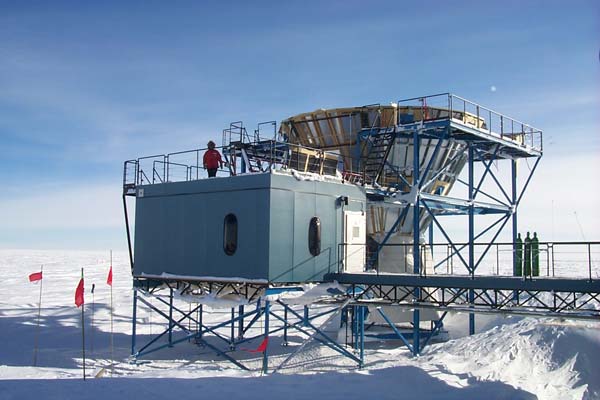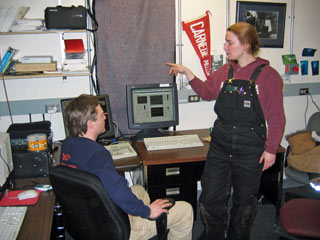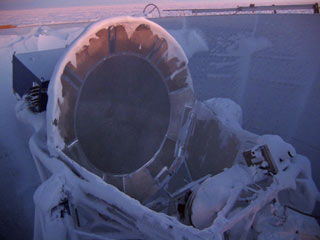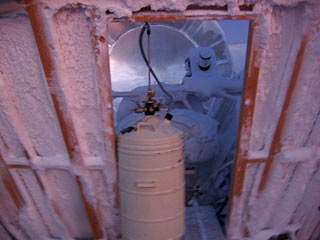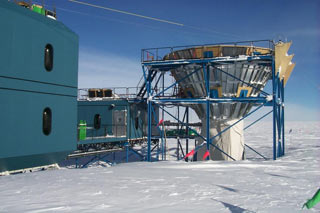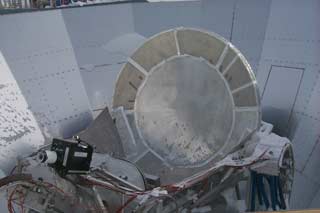Goodbye to VIPER
|
The VIPER telescope made its appearance in the dark sector in the late 1990's--one of several snake-named (rather than acronym-named) instruments (following on COBRA and PYTHON) operated by the Center for Astrophysical Research in Antarctica (CARA). The structure supporting the instrument and its control room was erected in 1996-97, and the 2.1 meter telescope installation was completed in 1997-98. The CARA consortium was managed by the University of Chicago, and while it was disestablished/reorganized around 2001, much of their old website content remains. The original telescope was created for wavelengths from 0.3-10mm, with four mirrors to gather microwave background (CMB) radiation--reportedly it was the first instrument to measure the size of CMB objects. It was later used with other receivers including Dos Equis, a CMB polarization receiver operating at 7mm; SPARO (the Submillimeter Polarimeter for Antarctic Remote Observing)--a 9-pixel polarimetric imager operating at 450 μm; and most recently ACBAR (the Arcminute Cosmology Bolometer ARray), a 16-element bolometer array. These instruments were swapped out several times, but in the latter years including 2005 the instrument was ACBAR. The VIPER/ACBAR telescope was shut down for the last time in November 2005, after my 2005 winter. | |
|
Noting the Carnegie-Mellon pennant in the above photo...CMU was only one of many institutions in the consortium involved with the telescope. | |
|
Not long after I took the above four photos, the telescope was shut down for the final time. Below, a couple more historical photos: | |
|
A few other information and photo links: The above photos (except mine) are from this Berkeley cosmology page about ACBAR; this CARA dark sector page includes more historical photos of VIPER erection and early years; and a more detailed science discussion of VIPER and other Pole CMB instruments at the time can be found in this 2001 paper Millimeter and Submillimeter Observations from the South Pole by Antony Stark. | |
